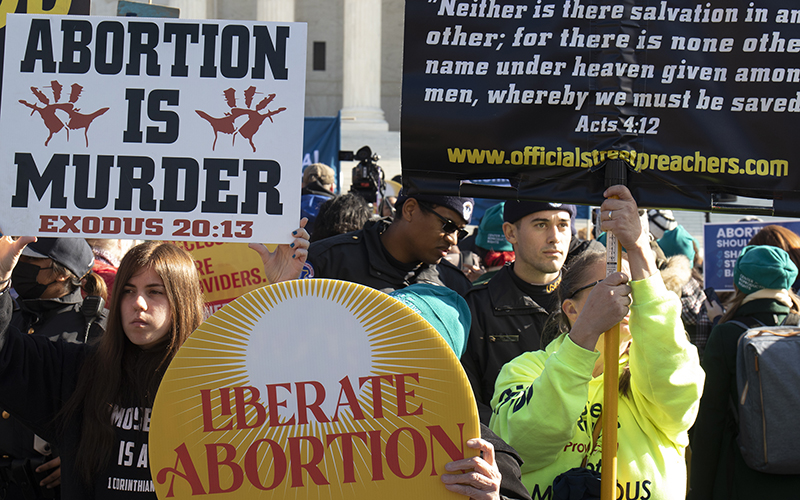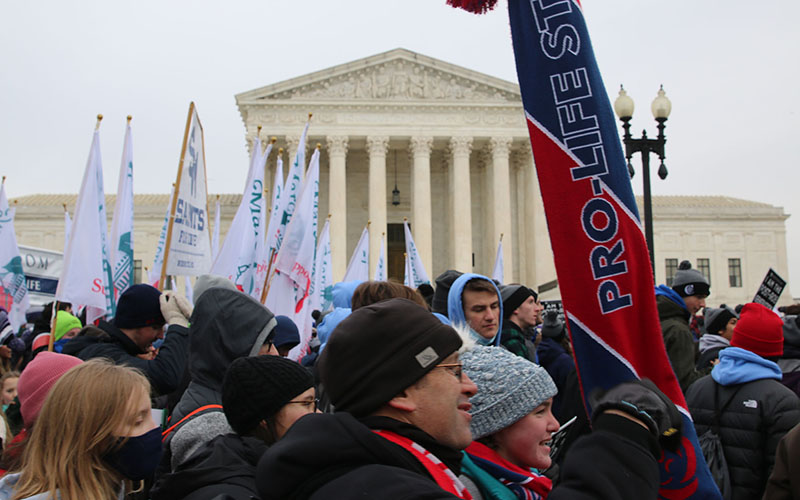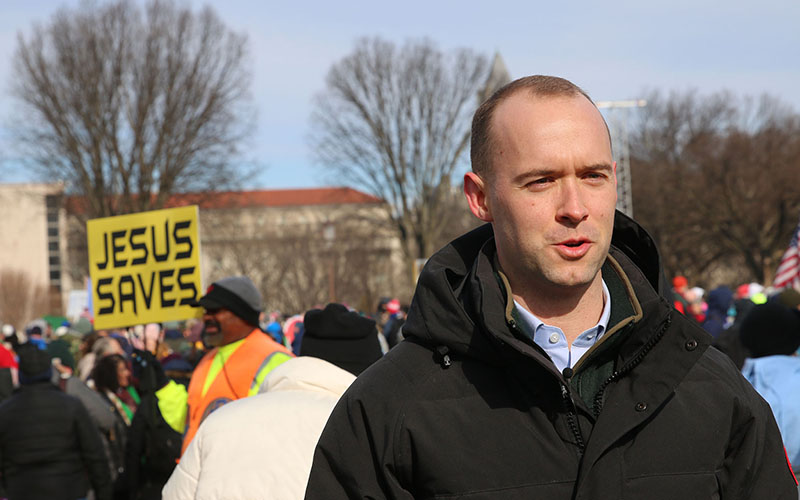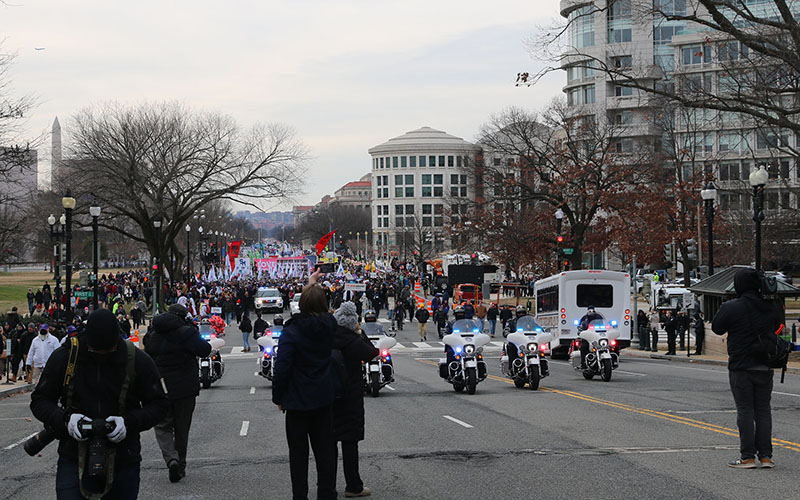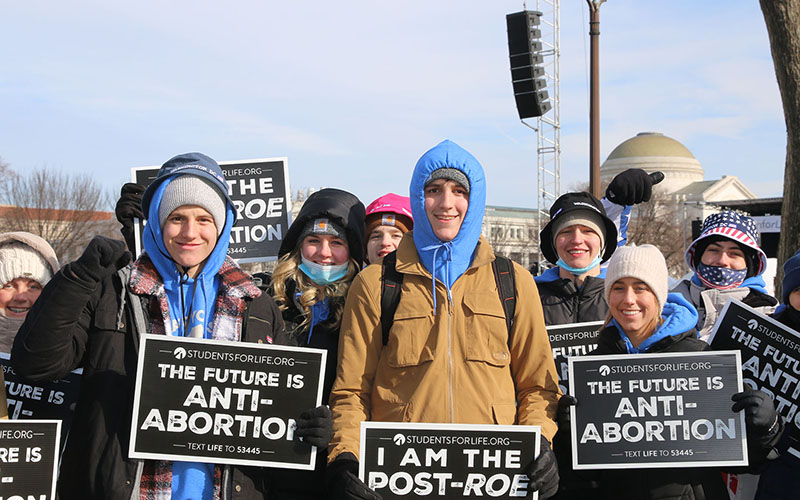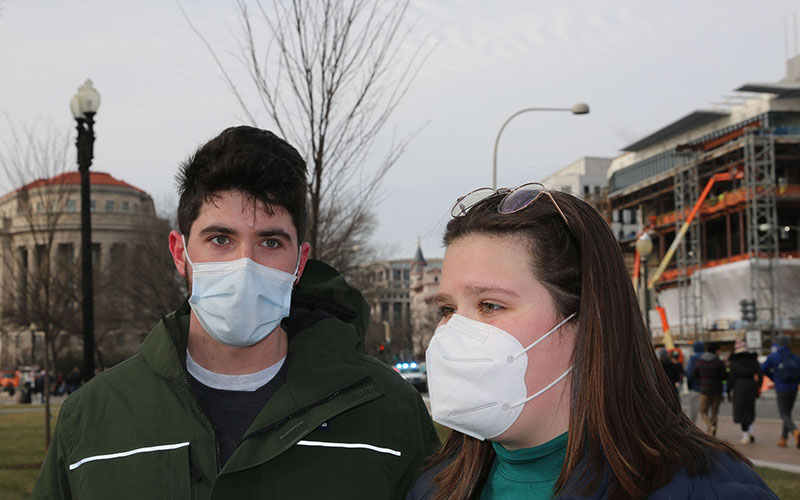WASHINGTON – Scottsdale student John Ayala and his Ville De Marie Academy classmates clenched hand-warmers Friday against a bitterly cold Washington morning, but Ayala said the discomfort was outweighed by the cause that brought him there.
“I think it’s just really important for people my age and my generation to stand up for life,” said Ayala, a senior and one of thousands who turned out for the 49th annual March for Life. “This event just gives me so much hope.”
Hope because after almost 50 years, anti-abortion advocates believe they are closer than ever to seeing the Supreme Court overturn Roe v. Wade, its 1973 ruling that recognized a right to an abortion.
For some like Ayala, this was their first time at the national March for Life, while others celebrated the fact that this could be the last.
“The fight’s been going on for 50 years to bring the right to life to each citizen in this country, and it’s a great feeling to know that we can expand that again to its rightful place,” said Chris Cottrell, an Arizona State University alumnus now studying in Boston.
While religious and political leaders took the stage, school and church groups appeared to make up a large part of the crowd that packed the National Mall for several blocks Friday. Bundled up under a cloudy sky and temperatures that never got out of the 20s, they watched massive video screens with speakers who prayed, sang and talked about the political and legal landscape for their cause.
After about an hour, the crowd began their march along Constitution Avenue, headed toward the Supreme Court. The marchers, many in matching colorful T-shirts or hats, cheered, chanted and waved signs and flags as they walked to the beat of drums. It felt less like a protest march than a parade.
No counter-protesters were in evidence at the march, but not everyone along the route was happy at the prospect of Roe being overturned.
“I think it’s a great injustice, I think that we’re seeing individual rights being stripped every day,” said Miranda Maciejewski, an abortion-rights supporter who interns in Washington.
She said she and her friend “stuck around” to see if they could have a conversation with some of those at the march, but their efforts did not get far.
“We were talking to a few people out here and just trying to kind of understand each other’s positions and … I don’t know there doesn’t seem to be much room for any sort of discussion,” she said. “Hopefully that can change in the future. I think it’s probably unlikely.”
This year’s march comes as the Supreme Court is considering restrictive Mississippi and Texas abortion laws that have the potential to overturn Roe – which the Mississippi case, Dobbs v. Jackson, explicitly requests.
Roe recognized abortion as a privacy right in 1973. A later case, Casey v Planned Parenthood, reaffirmed that right in 1992, but limited it to pre-viability abortions – those performed before a fetus can survive outside the womb, generally considered to be about 26 weeks.
But Mississippi claims that medical advances have lowered the viability threshold to 15 weeks of pregnancy, and its law, the Gestational Age Act, would ban abortions after that point. The Texas law goes further, prohibiting abortions after a fetal heartbeat is detected, which is typically around six weeks – before many women even realize they are pregnant, critics say.
The Texas law has the added twist of not being enforced by state officials, who have previously been the target of court challenges. Instead, it lets any private citizen bring a civil suit against any person involved in an abortion – even if that included just driving a woman to a clinic – with a minimum award of $10,000 a case.
While Roe has stood for almost 50 years, the current court is one of the most conservative in decades, with a solid 6-3 majority that experts believe will severely weaken Roe, if not overturn it outright.
That gives advocates like Ayala hope.
“I think the fact that it’s able to be reconsidered is very important and I think it’s a great win so far,” he said.
Cottrell said he is confident that Roe will be overturned by this court, but said that does not necessarily mean this year’s march will be the last.
“The fight for life doesn’t end after Roe, it goes back to the states, but also we’re fighting … for a culture of life,” he said. “That fight will keep going on until it’s really recognized throughout the country.”
-Cronkite News reporter Alexia Stanbridge contributed to this report.

